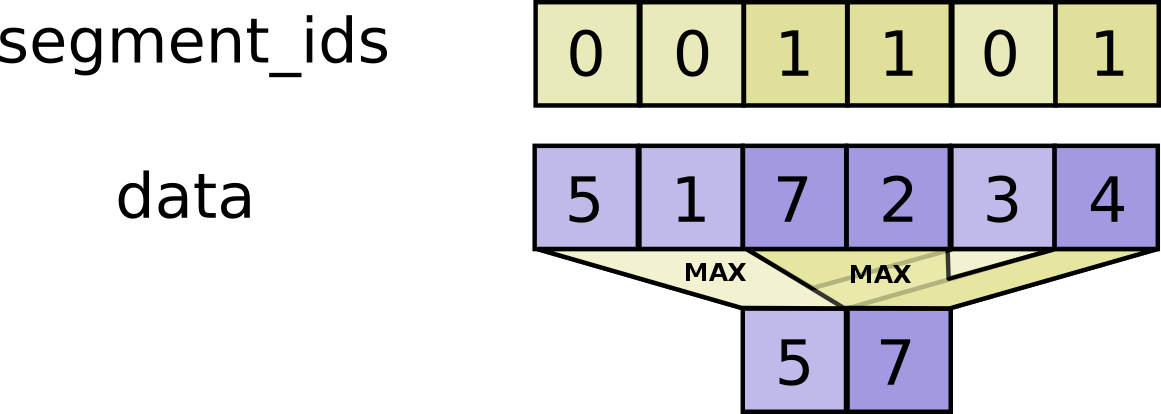tf.math.unsorted_segment_max | TensorFlow v2.16.1 (original) (raw)
tf.math.unsorted_segment_max
Stay organized with collections Save and categorize content based on your preferences.
Computes the maximum along segments of a tensor.
View aliases
Compat aliases for migration
SeeMigration guide for more details.
tf.compat.v1.math.unsorted_segment_max, tf.compat.v1.unsorted_segment_max
tf.math.unsorted_segment_max(
data: Annotated[Any, tf.raw_ops.Any],
segment_ids: Annotated[Any, tf.raw_ops.Any],
num_segments: Annotated[Any, tf.raw_ops.Any],
name=None
) -> Annotated[Any, tf.raw_ops.Any]
Readthe section on segmentationfor an explanation of segments.
This operator is similar to tf.math.unsorted_segment_sum, Instead of computing the sum over segments, it computes the maximum such that:
\(output_i = \max_{j...} data[j...]\) where max is over tuples j... such that segment_ids[j...] == i.
If the maximum is empty for a given segment ID i, it outputs the smallest possible value for the specific numeric type,output[i] = numeric_limits<T>::lowest().
If the given segment ID i is negative, then the corresponding value is dropped, and will not be included in the result.

For example:
c = tf.constant([[1,2,3,4], [5,6,7,8], [4,3,2,1]])
tf.math.unsorted_segment_max(c, tf.constant([0, 1, 0]), num_segments=2).numpy()
array([[4, 3, 3, 4],
[5, 6, 7, 8]], dtype=int32)
| Args | |
|---|---|
| data | A Tensor. Must be one of the following types: float32, float64, int32, uint8, int16, int8, int64, bfloat16, uint16, half, uint32, uint64. |
| segment_ids | A Tensor. Must be one of the following types: int32, int64. A tensor whose shape is a prefix of data.shape. The values must be less than num_segments. |
| num_segments | A Tensor. Must be one of the following types: int32, int64. |
| name | A name for the operation (optional). |
| Returns |
|---|
| A Tensor. Has the same type as data. |